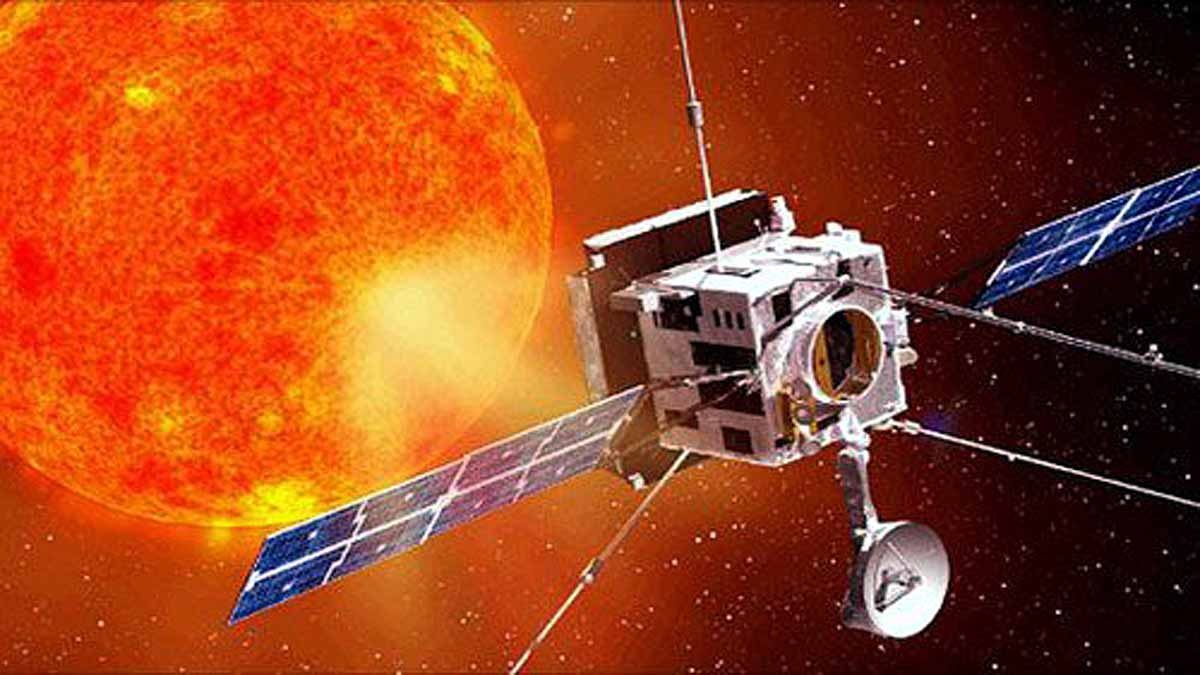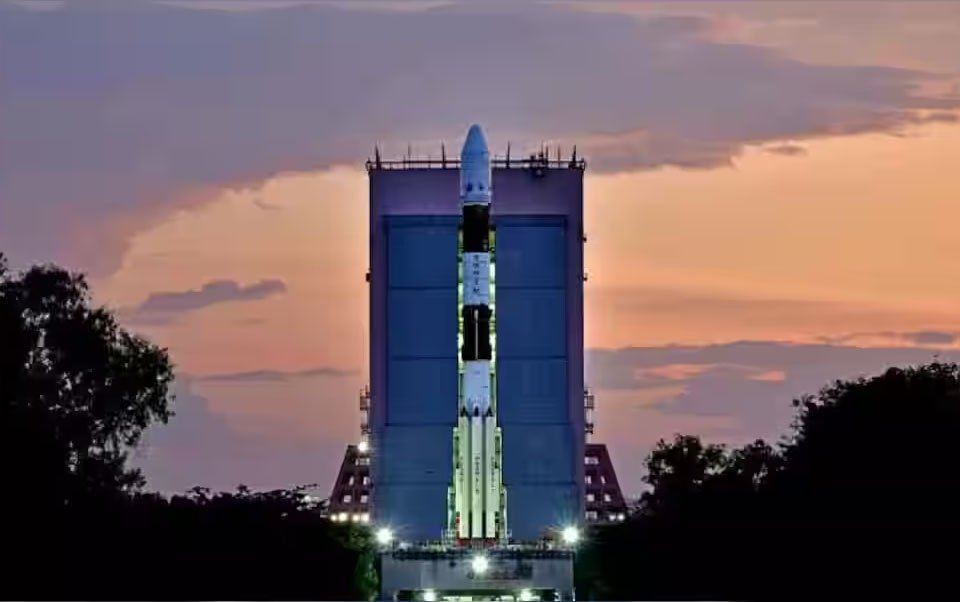
New Delhi: India’s first solar mission, Aditya-L1 spacecraft has successfully performed the second earth-bound manoeuvre, the Indian Space Research Organisation (ISRO) said on September 5. The space agency further added that the next manoeuvre is scheduled for September 10. A total of five such orbit manoeuvring will be performed during the satellite’s revolution around the Earth.
Aditya-L1, India’s first solar observatory mission was launched on September 2 by the Indian Space Research Organisation (ISRO). The organisation estimates that the Aditya-L1 mission will arrive at the observing site in four months. A halo orbit will be set up around Lagrangian Point 1 (L1), which is 1.5 million km from Earth and points directly at the Sun.
Aditya-L1 is a spacecraft designed explicitly for solar research. It has seven different payloads, all of which were created in-house. There were seven launches, five by ISRO and two by Indian universities working with ISRO. Aditya means “Sun” in Sanskrit. The Lagrange Point 1 of the Sun-Earth system is the point in space where the Sun’s and Earth’s gravitational pulls are equal. The SUIT (Ultraviolet Imaging Telescope) is a continuous ultraviolet imager that catches photographs of the Sun. Observations need the use of the UV spectrum. Its significance stems from the vast amount of ultraviolet and X-ray energy emitted by the Sun’s corona. VELC is a spectrograph that focuses on the corona of the Sun, which is the outermost layer of the Sun’s atmosphere. Notably, it extends well beyond the apparent disk of the Sun. Along with SUIT, VELC will monitor the corona and allow ISRO scientists to correlate changes in the corona with events on the Sun’s surface.
Many companies – small, mid-size and big have played their bit and contributed to the successful launch of Aditya-L1. To start off with Godrej Aerospace, business arm of Godrej & Boyce, the flagship company of the Godrej Group, once again demonstrated its vital contribution to India’s space exploration endeavours. Godrej Aerospace has contributed to the Vikas Engine and thrustors used for ISRO’s PSLV Aditya-L1 mission. With its commitment to indigenous manufacturing, innovation, and technological advancements, the company has further solidified its position as a key player in India’s aerospace sector. Over the past three decades, Godrej Aerospace has contributed to the production of more than 175 engines for the Polar Satellite Launch Vehicle (PSLV) and Geosynchronous Satellite Launch Vehicle (GSLV) missions by ISRO.
Similarly, Ananth Technologies Limited (ATL) chipped in several avionics packages, including on-board computers, Star sensors, Modular EED systems and payload DC-DC converters. For PSLV-C57, that launched Aditya-L1 into the historic journey, Ananth Technologies supplied 48 sub-systems such as SARB, NGCP, Quad SBU, tracking transponder and various other interface units and did complete Assembly, Integration and Testing (AIT).
According to Subba Rao Pavuluri, Chairman and Managing Director of ATL, the PSLV-C57 is the seventh launch vehicle successfully integrated by ATL team and five more launch vehicles are currently under integration. He further added, “We are proud to announce our partnership with ISRO in the prestigious Aditya-L1 programme. This is set to drive ground-breaking advancements in space exploration and satellite technology, enhancing India’s position in the global space industry.”
Headquartered in Hyderabad, ATL has dedicated facilities in Thiruvananthapuram for the fabrication, assembly, testing, and supply of advanced electronic packages, computer systems, and various sub-systems for launch vehicles. ATL has also established extensive facilities for satellite manufacturing in Bengaluru.

The mission’s primary goal is to improve India’s ability to observe the Sun 24 hours a day. Observing the Sun without obstruction will aid in closely monitoring its activity. Aditya L1 is outfitted with two large and five smaller instruments to achieve its mission. The spacecraft will be in a halo orbit at L1 in the Sun-Earth system 1.5 million km from Earth. The primary benefit of having a satellite in a halo orbit around the L1 point is the uninterrupted, unobstructed view of the Sun that this provides. The use of monitoring the Sun’s activity and how it affects space weather in near-real time will be significantly enhanced.
The spacecraft is outfitted with electromagnetic, particle, and magnetic field detectors to study the Sun’s photosphere, chromosphere, and corona. Important scientific investigations of the propagation effect of solar dynamics in the interplanetary medium are conducted using the unique vantage point L1, with four payloads performing direct solar observations and the remaining three performing in-situ studies of particles and fields at the Lagrange point L1.
The Aditya-L1 mission’s success involved wide application of specialised metals, alloys and critical elements. Mishra Dhatu Nigam Ltd (MIDHANI) has contributed to ISRO’s successful launch of Aditya-L1 by supplying Specialised Metals and Alloys for India’s first solar mission. Critical elements from MIDHANI have been employed in the Aditya-L1 launching vehicle PSLV-C57, as well as many other components. The launcher was built with MIDHANI critical materials like Ti-6Al-4V Titanium alloy – PS4 Tank and Gas bottles, and C-103 Niobium Alloy – PS4 thrust chamber, and many more.
Mishra Dhatu Nigam Ltd (MIDHANI) is a Miniratna Category-I company under the Ministry of Defence. It manufactures titanium, super alloys, special-purpose steel, and other specialty metals for use in nuclear power, military, and aerospace.
Another company from Hyderabad, MTAR Technologies Limited supplied major systems such as liquid propulsion engines, electro-pneumatic modules, propulsion systems and satellite valves.
“We also supplied safety couplers, ball screws for launch vehicle actuation systems, connector assemblies, actuation systems hardware, nose cone, among others for PSLV-C57 launch vehicle used for the mission,” Parvat Srinivas Reddy, Managing Director, MTAR Technologies Limited said.
Coimbatore based company Chakradhara Aerospace and Cargo Private Limited’s (CACPL) Aerospace Division, which had contributed for the Chandrayaan III mission, extended its engineering capabilities and products for PSLV-C57 launcher and the Aditya L1 satellite. CACPL contributions included RCS technology, start valves and bypass valves, electrical actuators and motors, high-precision pressure transducers, control modules, and gear head motors in PSLV-C57 launcher and latchable series redundant valve (LSRV) in Aditya L1.
In order to build up the speed it needs to leave the planet during its 16-day Earth orbit, Aditya-L1 will perform five manoeuvres. Then it will perform a Trans-Lagrangian1 insertion manoeuvre, kicking off its 110-day journey to its final destination near the L1 Lagrange point. After being manoeuvred to the L1 point, a neutral gravitational region between the Earth and the Sun, Aditya-L1 will then be bound to an orbit around L1. The satellite will spend its entire operational lifetime in an erratic orbit around L1, travelling along a plane that is nearly perpendicular to the line connecting Earth and the Sun.
At the L1 Lagrange point Aditya-L1’s position guarantees it a direct line of sight to the Sun at all times. The satellite can also detect solar radiation and magnetic storms before Earth’s magnetic field and atmosphere alter them by being in this position. Because of its relatively stable gravitational environment, the L1 point is ideal for satellite operations because it reduces the frequency of orbital maintenance. Aditya-L1 will remain 1.5 million miles from Earth, 1 per cent of the Sun’s distance. Aditya-L1 would examine the Sun’s heliosphere, or outer atmosphere. Aditya-L1 will not make a solar landing or come closer to the Sun.















